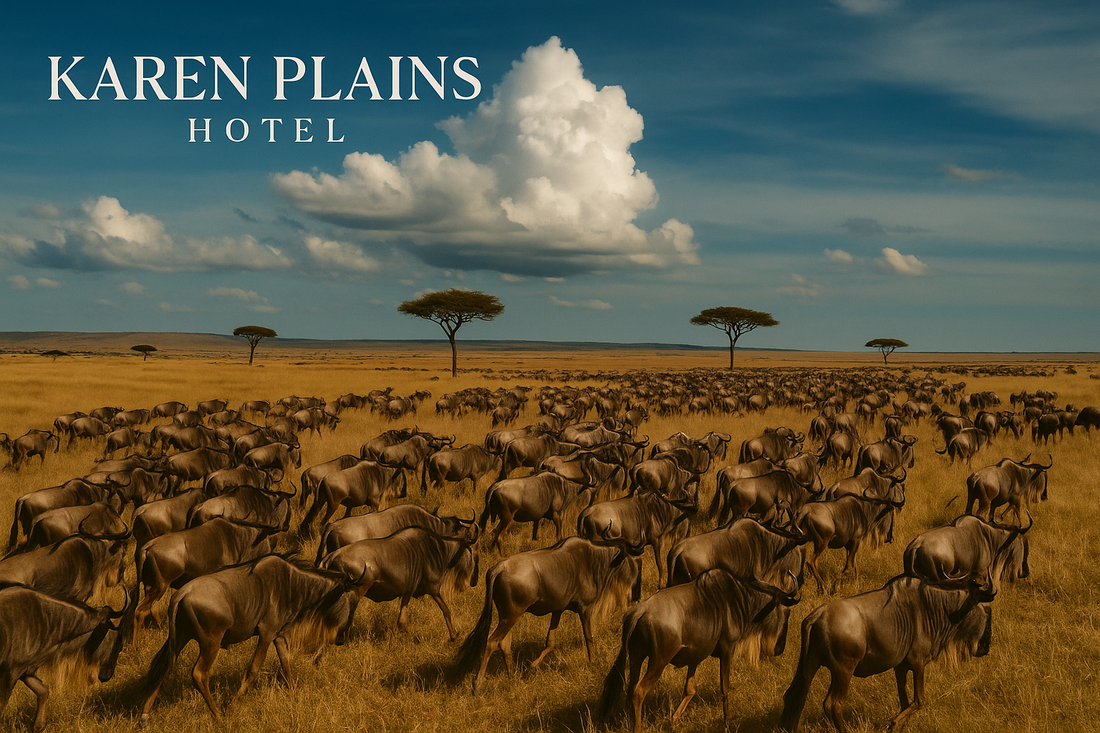
How to Book an Affordable Safari (Without Losing the Magic)
Share
How to Book an Affordable Safari (Without Losing the Magic)
Published: October 17, 2025 • By Karen Plains Hotel Team
Safaris don’t have to be once-in-a-lifetime splurges. With smart timing, the right locations, and a few insider moves, you can craft a soul-stirring Kenya safari that respects both your budget and the wild places you’ve come to see.
1) Start With Your Priorities (Then Price Backwards)
List your must-haves (big cats, rhino tracking, quiet sightings, family pool). Price the experience, not just the room. The three biggest value drivers:
- Guiding quality (qualifications, guide-to-guest ratio)
- Access (private conservancy vs. national park; night drives & walks allowed?)
- Vehicle density (fewer vehicles per sighting = richer time on wildlife)
2) Travel in the Green or Shoulder Seasons
Kenya sweet spots:
- Jan–Mar: Warm, clear; excellent predator viewing.
- Jun–early Jul & late Oct–Nov: Shoulder around peak, strong value.
- Apr–May (long rains): Best rates, lush landscapes, dramatic skies.
Migration dream? Target the Mara around Aug–Oct, but let an expert position you—herds move!
3) Choose Conservancies for Crowd-Free Value
Private/community conservancies bordering major parks often allow night drives, walking, and off-roading with lower vehicle density. Pay a touch more per night, get far more experience-per-dollar.
4) Stay Longer in Fewer Places
Every flight or long transfer adds cost. Two camps at 3–4 nights beat four at 2 nights. You’ll witness behavior unfold, not just tick boxes—while trimming transfers and carbon.
5) Embrace All-Inclusive (The Honest Math)
Safari AI typically covers room, all meals, most drinks, twice-daily game drives and some activities. Upfront looks pricier; on trip = fewer surprise extras.
6) Book One Operator’s Circuit
Many brands offer multi-camp discounts, free inter-camp hops, or solo single-supplement waivers if you stay within their portfolio. Ask about “Stay 4, Pay 3”, circuit savings, and long-stay specials.
7) Spend Where It Counts (Save Where It Doesn’t)
Worth the splurge
- Low-density/private areas (better sightings, fewer vehicles)
- Top guiding teams
- Specialist hides & photographic rigs
Easy savings
- Skip ultra-lux room categories
- Smarter routing to reduce flights
- Owner-run city hotels pre/post safari
8) The Nairobi Advantage (Cut Costs, Add Wow)
Base in leafy Karen to maximize budget—and time:
- Nairobi National Park sunrise game drive (lions/rhinos + skyline)
- Sheldrick Wildlife Trust & Giraffe Centre same day
9) Smart Money & Admin
- Fees: Park & conservancy fees vary by area/season—budget ahead.
- Payments: Cards widely accepted; M-PESA common; carry small USD/KES for tips.
- Baggage: Bush flights often limit to ~15kg soft bags.
- Health & entry: Check current visa & vaccination guidance with official sources/your clinic.
- Power: Kenya uses UK 3-pin plugs.